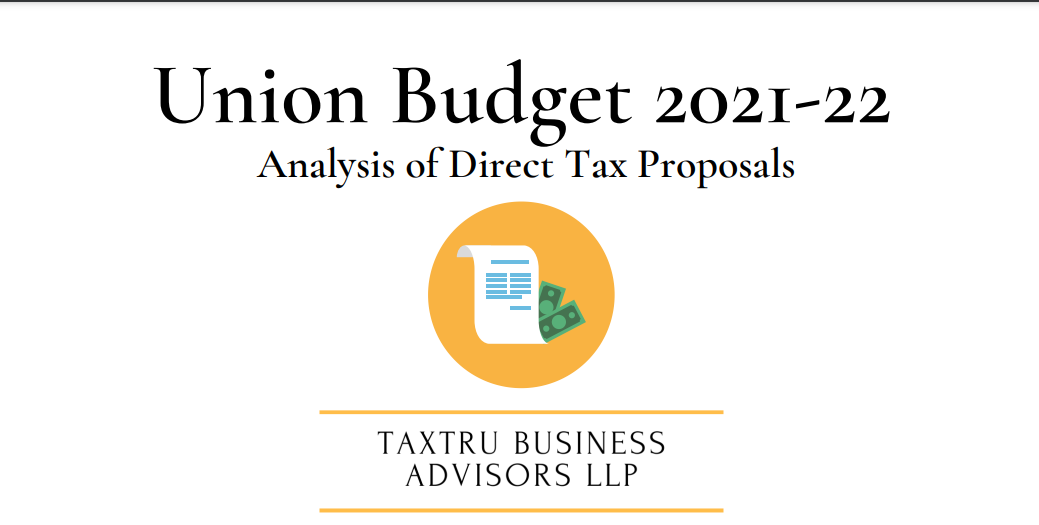Union Budget 2021-22 Analysis of Direct Tax Proposals
Introduction
In the first Budget for the new decade, the good part is that there is neither change in the tax rates nor the introduction of any new Cess for individuals, even as the fiscal deficit increased due to the pandemic. The choice of old and new tax regimes for applicable slabs continues for FY 2021-22.
The theme for the direct tax proposal was the simplification of the tax administration, ease of compliance, and reduction of litigation. The key aspects of the direct tax proposals impacting individual taxpayers are discussed below.
Please have a look at the booklet detailing the direct tax proposals prepared by CA Udit Swami & CA Jaya Krishna Kapoor for in-house training.
Budget Highlights
Expenditure: The government proposes to spend Rs 34,83,236 crore in 2021-22. As per the revised estimates, the government spent Rs 34,50,305 crore in 2020-21, 13% higher than the budget estimate.
Receipts: The receipts (other than borrowings) are expected to be Rs 19,76,424 crore in 2021-22, which is 23% higher than the revised estimates of 2020-21. In 2020-21, revised estimates for receipts were 29% lower than budget estimates. Given the impact due to COVID-19, it is useful to see the growth from 2019-20, an annual increase of 6%.
GDP growth: Nominal GDP is expected to grow at 14.4% (i.e., real growth plus inflation) in 2021-22.
Deficits: Revenue deficit is targeted at 5.1% of GDP in 2021-22, which is lower than the revised estimate of 7.5% in 2020-21 (3.3% in 2019-20). The fiscal deficit is targeted at 6.8% of GDP in 2021-22, down from the revised estimate of 9.5% in 2020-21 (4.6% in 2019- 20). The government aims to steadily reduce the fiscal deficit to 4.5% of GDP by 2025- 26.
Ministry allocations: Among the top 13 ministries with the highest allocations, the highest annual increase over 2019-20 is observed in the Ministry of Jal Shakti (64%), followed by the Ministry of Consumer Affairs, Food and Public Distribution (48%) and the Ministry of Communications (31%).
“Taxation is the price which civilized communities pay for the opportunity of remaining civilized.” Albert Bushnell Hart
Direct Tax Proposals
MEANING OF THE TERM ‘LIABLE TO TAX’ [SECTION 2(29A)
The Act currently does not define the term ‘liable to tax ’ though this term is used in section 6, in clause (23FE) of section 10 and various agreements entered into under section 90 or section 90A of the Act. Hence, it is proposed to insert clause (29A) to section 2 of the Act providing its definition.
The term ―’ liable to tax ’ in relation to a person means that there is a liability of tax on that person under the law of any country and will include a case where subsequent to the imposition of such tax liability, an exemption has been provided.
AN EXEMPTION UNDER SECTION 10 (23FE)
- Section 10 (23FE) was introduced in last year’s Budget in order to encourage Sovereign Wealth Funds and Pension Funds to make investments in the infrastructure sector of India.
- The Budget has provided certain relaxations in the conditions for availing 100% tax exemption (such as the prohibition on loans or borrowings, restriction on commercial activities, direct investment in the entity owning infrastructure, etc).
- These conditions shall serve as a relief to the investment funds by reducing practical issues, and thereby provide an overall push to the infrastructure sector.
Related Topic:
The Direct Tax Vivad Se Vishwas Rules, 2020
Read & Download the full copy in pdf:
If you already have a premium membership, Sign In.
 TaxTru Business Advisors
TaxTru Business Advisors
Consultants













